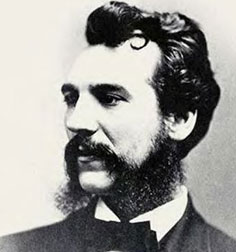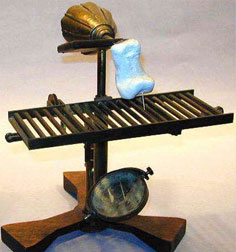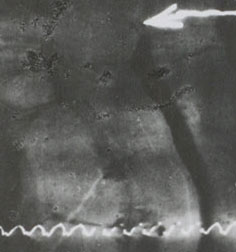
Studying Sound: Alexander Graham Bell (1847–1922)
Alexander Graham Bell received the fundamental U.S. patent for the telephone and telephone system in 1876.
Bell’s background was in hearing and speech, not electrical technologies. He came from a family of professional speech teachers, and his mother and his wife were both deaf. His early professional career focused on educating those with hearing and speech impairments.
In the early 1870s, while teaching in Boston, Bell had been studying acoustics at the Institute of Technology (now MIT). His experiments there, especially collaborating with a physician to construct a phonautograph based on the operation of the human ear, gave him the idea for the electric telephone and influenced his work on sound recording.
Bell’s ear phonautograph (replica). While studying a French phonautograph at the Institute of Technology (now MIT) in Boston, Bell made his own version of the machine in 1874 to enable his deaf students to visualize sound vibrations translated into mechanical motion. His instrument used a corpse’s ear; sound caused the eardrum to vibrate, and an attached stylus traced a line representing those vibrations on a soot-coated glass plate.
In 1864 Bell’s father, Alexander Melville Bell, had invented visible speech, a symbol-based system to help deaf people learn to speak.





